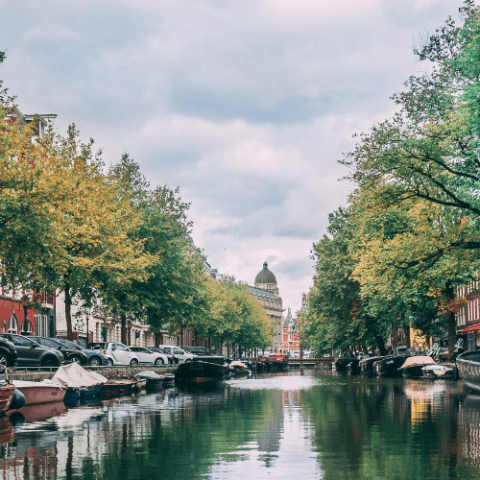Guiding the flow: a research into spreading tourists effectively
A recent study has revealed a simple truth about tourist behaviour: visitors were just as happy exploring off-the-beaten-path locations as they were when visiting crowded hotspots. They respond to directional cues embedded in the information they receive, influencing tourist movements and experiences. Perhaps most importantly for overtourism concerns, the study found no measurable risk to tourist satisfaction when hidden gems were being marketed exclusively.
- About BUas
- Research
- Tourism
Influencing tourist movements and experiences
This project was carried out in collaboration between the CELTH, the European Tourism Futures Institute, amsterdam&partners, Wonderful Copenhagen, the Zoey Foundation, and BUas.
Research led by Ondrej Mitas, senior lecturer and experience researcher at BUas, explored the effectiveness of various information channels in influencing tourist movements and experiences in Amsterdam and Copenhagen.
In Copenhagen, tourists using maps highlighting hidden gems were nearly 12 times more likely to explore lesser-known areas compared to those shown must-see attractions. Meanwhile in Amsterdam, exposure to hidden gem content, particularly via Zoey, was linked to reduced movement around high-traffic tourist spots. GPS tracking revealed significant differences in movement patterns despite similar satisfaction levels across all groups.
A follow-up workshop resulted in the further development of two strategic pathways and actionable plans for next steps. “These pathways offer promising directions for managing visitor flows and enhancing urban tourism sustainability through smarter communication,” according to Mitas.
Most comfortable with moderate levels of crowding
Another recent study, led by Marcel Bastiaansen, Professor of Leisure and Tourism Experience at BUas, has revealed fascinating insights into how people actually experience crowding at tourist destinations by using brain monitoring technology to capture immediate, unconscious responses.
Researchers showed participants 360-degree virtual reality images of Amsterdam tourist spots with varying numbers of people at different distances, while recording their brain activity through EEG sensors.
“The study found that tourists feel most comfortable with moderate levels of crowding rather than completely empty or overly crowded spaces,” explains Bastiaansen.
The brain data showed that when people encounter uncomfortable crowding, their immediate unconscious response is not just feeling bad; it is an urge to physically move away. This suggests that overtourism triggers an automatic ‘fight or flight’ type response in visitors' brains before they even consciously realise they are uncomfortable. Providing evidence for why people instinctively seek to escape overly dense tourist areas.
Rethinking tourist flow management
For cities struggling with overtourism, the research provides confirmation that simply changing how we inform tourists and thoughtful information design may successfully redistribute visitor flows, while maintaining the quality of visitor experiences.
